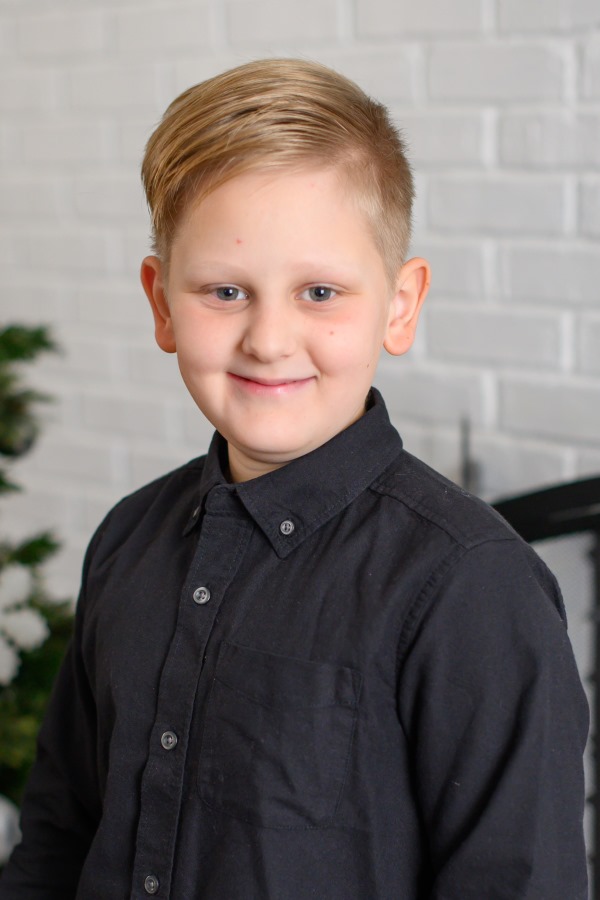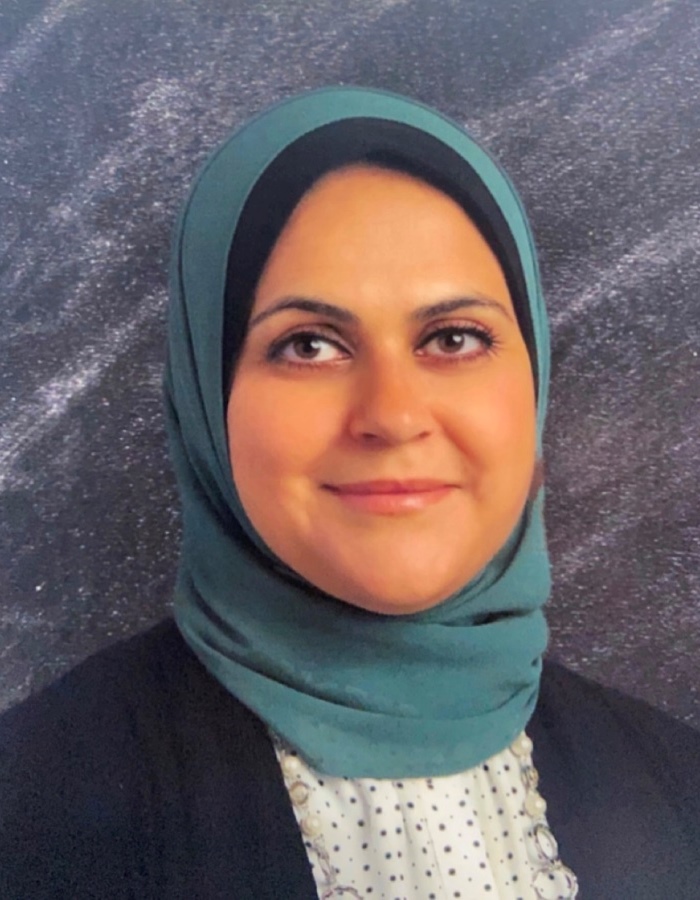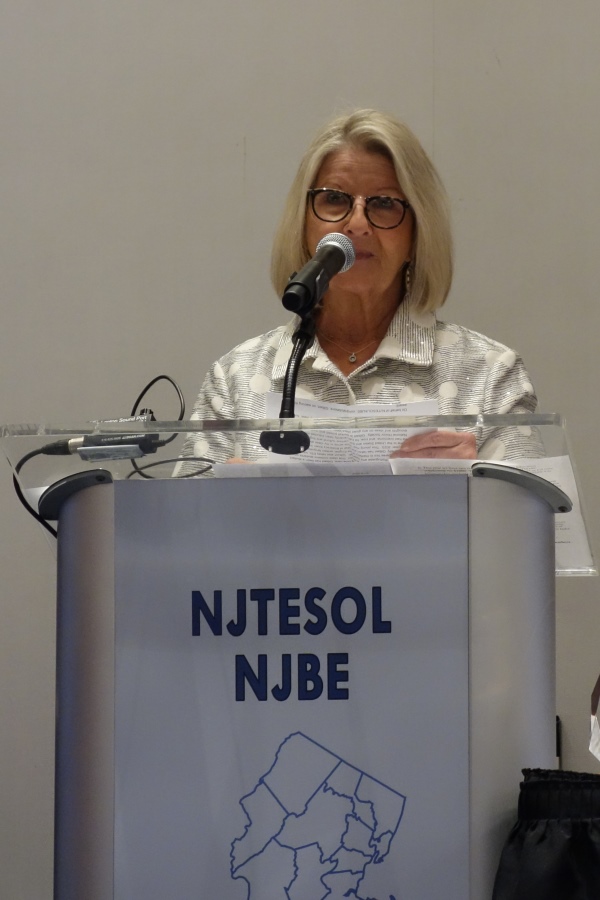NJ Teachers of English to Speakers of Other Languages/
NJ Bilingual Educators
ARTICLES:
Highlighting World Languages in Elementary School– Sarah Elia
and
Why Should We Teach Second Languages in Elementary School?– Blue Lindner
2023 Scholarships and Awards
and
Scholarship and Award Winner List and Gallery
Spring Conference Success and Thanks– LeighAnn Matthews,
Thanks for the Memories!– Tina Kern, and
Thank You to Our Spring Conference Sponsors and Exhibitors
Spring Conference Photo Gallery
Your Photos from the Caption Contest
When Multilingual Learners Refuse to Speak Their Home Language– Judie Haynes
and
Silencing the Mother Tongue Makes It Harder for Bilingual Children to Learn English– Allyssa McCabe
FAQ: Raising Bilingual Children– From the Linguistic Society of America by Antonella Sorace and Bob Ladd
and
Prioritizing the Home Language– Marina Haikin
Black Lives Matter in Teaching English as a Second Language!– Kristin Lems
and
Black Parents Raising Bilingual Kids Can Find Support With These 6 Tips– Nafeesah Allen
A Website to Explore: games4esl.com
and
iSLCOLLECTIVE
Memes and GIFs for Writing Development-Betsy Gilliland
and
The Secret Life of ESL Flashcards: How to Transform Them into Fun Classroom Games– Susan Verner
Emojis in the ESL and Bilingual Classroom-Michelle Land
and
NJTESOL/NJBE Website Resources– Marilyn Pongracz
6 Basic Goals to Have in Teaching the English Language– Revel Arroway
and
Your Guide to Fluency vs. Accuracy in English Language Teaching– Linda D’Argenio
Welcoming Newly Arrived High School ELLs– Sarah Elia
and
5 Playful Strategies That Reduce Language Learning Anxiety– Paige Tutt
Our Very First Member of the Month– Yacqueline Cruz
and
Why I Keep Teaching– Luigina Finneran
The Name Jar
and
What’s In a Name? The Story Behind NameCoach– Praveen Shanbhag
June 27, 2023
Highlighting World Languages in Elementary School
By Sarah Elia
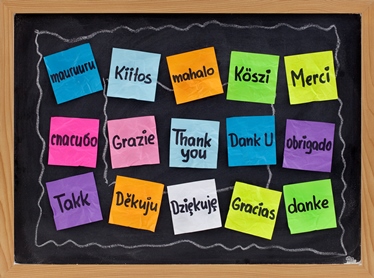 Elia introduces several ideas for introducing children to world languages even if the school is not one of the 20% in the United States that provide instruction in second languages in the elementary grades.
Elia introduces several ideas for introducing children to world languages even if the school is not one of the 20% in the United States that provide instruction in second languages in the elementary grades.
- Signage throughout the school and posters in multiple languages: A smartphone and Google translate can provide a fairly accurate pronunciation of the words.
- Word of the week and morning announcements: Commonly used classroom words or phrases could be introduced each week. Morning announcements could be given in two languages.
- Reading partners, guest presenters, and library read-alouds: Invite parents or guardians, multilingual staff or students to read a bilingual book to a class.
- Bilingual videos for staff professional development and PTA workshops: These can be a means to teach words and phrases to staff, so they can use them when they interact with children in the school.
- Everyday communication and school publications: Begin the school year by incorporating words from other languages in everyday interactions with your class. Newsletters could contain a section for world languages.
- Projects and play-based after-school and summer enrichment programs: Active children’s games could be played using other languages. Children could write bilingual labels on their projects.
Elia recommends these strategies in order to make world languages an integral part of school culture.
This article was shared on the hotlist June 9th.
You can read the details here.
Why Should We Teach Second Languages in Elementary School?
By Blue Lindner
 Lindner opens her article by noting that she started teaching Spanish to young children because parents in a city in Texas and a rural community in Colorado requested it. She then lists three reasons why schools should mandate teaching second languages in elementary school.
Lindner opens her article by noting that she started teaching Spanish to young children because parents in a city in Texas and a rural community in Colorado requested it. She then lists three reasons why schools should mandate teaching second languages in elementary school.
- Reason #1: Research says elementary students learn a second language better than older students. In comparison studies, students who were taught another language in elementary school outperformed middle and high school students who had the same number of hours of instruction.
- Reason #2: Research says people who learn another language are smarter. The author cites multiple studies that demonstrate the cognitive benefits of learning a second or third language, such as better scores in reading and math, increased verbal and and listening skills, and greater creativity.
- Reason #3: Demographics are changing in our country, and we are now living in multilingual, multicultural communities. The ability to speak other languages is an asset in life, and results in students who are more receptive to other cultures.
Lindner closes with this comment.
After teaching Spanish to children for most of my adult life, I decided to write this blog to remind myself why I do this. Early language learning contributes to learning languages better, higher performance in all academic areas, and most important, a lifelong ability to communicate effectively. Parents want this for their children. Perhaps the question I started with needs to be reworded: Remind me why every elementary school in our country doesn’t teach foreign languages?
Blue Lindner is the author of a preschool and elementary Spanish curriculum.
You will find more information here.
July 5, 2023
NJTESOL/NJBE
2023 Scholarships and Awards
Scholarship is one of the core missions of NJTESOL/NJBE. Each year, awards are given in eleven categories to honor the accomplishments of ESL students and teachers. This year, seventeen recipients, listed below, were honored at the annual President’s Reception, held at the New Brunswick Hyatt. Leaders and advocates were also recognized with four Presidential awards. You are welcome to attend the celebration; a registration fee is required.
Please encourage your students to apply for one of these scholarships or awards, and you may apply for the teacher’s grant. Submissions open in January through the NJTESOL/NJBE website. You can review the qualifications at https://njtesol-njbe.org/scholarships/. Be sure to spread the word in your districts.
(See more below.)
NJTESOL/NJBE 2023 Presidential Awards
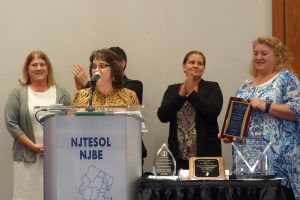
Mercer County Educational Association Legislative Action Team
Dr. Elizabeth “BJ” Franks Advocacy Award
Mercer County Educational Association Legislative Action Team
Each year, this award is given to recognize a person or organization in New Jersey that has served as a catalyst for the advancement of the needs and concerns of English learners in our state. MCEA LAT has worked tirelessly to end EdTPA. We at NJTESOL/NJBE recognize that EdTPA was a frustrating and discriminatory obstacle to teacher certification. We are indebted to your team because ending EdTPA was an important step in helping to bring more ESL and bilingual teachers into our schools to support our English learners.
Fred Carrigg Leadership Award
Barbara Tedesco, Llamame LLC
Each year, this award is given to an individual whose work has advanced the concerns of English language learners and immigrant families in our state. Without a doubt, Barbara Tedesco has been a driving force to improve the experiences of our English learners, their families, as well as the members of NJTESOL/NJBE for many years. Barbara’s name is synonymous with excellence and our organization is indebted to Barbara for her work through all of her years on the executive board, especially as a leader, historian, and sunshine representative.
Seal of Biliteracy Superintendent of the Year
Dr. Scott Rocco, Hamilton Township
This award is given to a superintendent in New Jersey who is committed to promoting achievement in biliteracy and specifically the Seal of Biliteracy. Dr. Scott Rocco from Hamilton Township School District strongly supports his district’s Seal of Biliteracy program and highlights students’ Seal of Biliteracy successes on the district’s website. They have had over 554 recipients in at least 16 different languages since 2016.
President’s Award
Camilo Montoya-Galvez, CBS Immigration Reporter
Camilo, a former ESL student himself, is now the Immigration Reporter for CBS News. He is a three-time Emmy Award winning bilingual reporter who has written countless articles about the plight of immigrants coming to this country, especially of the children who cross the border and the conditions in which they live. In addition, he provides live reports on CBS and has worked with Anderson Cooper and 60 Minutes. Camilo pays it forward by going to school districts to meet with students and staff in districts around New Jersey to share his experiences and motivate English learners to reach for their goals. This is his second year presenting at NJTESOL/NJBE as an invited speaker and is an inspiration to us all.
Scholarship and Award Winners
Fourth Grade Award
Emil Serhiienko & Maria Tocachi Tacuri
Eighth Grade Award
Ariana Benitez & Valentina Ardila Valens
Raquel Sinai Newcomer Scholarship
Rebeca Lopez & Sarah Silva
Pedro J. Rodriguez High School Scholarship
Sara Orozco Ospina
Seal of Biliteracy Scholarship
Gilbert Delgado & Weronika Pariaszewska
Praxedes Leon Seal of Biliteracy Parent Award
Mrs. Jose A. Oliveira Delgado & Agnieszka Czerkies Pariaszewska
Higher Education Scholarship
Dayana Verdugo & Yun Zhang
Dr. Jessie Reppy Memorial Scholarship
Heather Menendez
Bilingual Educator Scholarship
Carmen R. Carrion
Judie Haynes’ Grant for ESL/Bilingual Teachers Grant
Tamara Amos & Dalia Ibrahim
July 11, 2023
Spring Conference Success and Thanks
By LeighAnn Matthews
It’s hard to believe that the 2023 Spring Conference has already come and gone! This year’s theme highlighted collaboration – and that certainly is also at the heart of planning for and organizing the conference. One might assume that as the conference chair I do a lot of the work, but that could not be further from the truth. The success of the conference is truly due to the efforts of many others – the Hyatt hotel staff, keynote speakers, our workshop presenters, exhibitors and sponsors, volunteers, invited guests, attendees, and of course the conference committee. Many thanks to our Conference Coordinator, Caia Schlessinger, our Exhibitor Liaison, Tina Kern, our Technology Coordinator, Marilyn Pongracz, our Business Administrator, Gwen Franks, and Executive Director, Kathleen Fernandez. Believe it or not, the conference committee is already busy planning for the 2024 Spring Conference!
Looking back on this year’s conference there were many memorable moments. We had three incredible keynote speakers: Dr. Andrea Honigsfeld, Dr. Edward Fergus, and Ms. Jacquelyn León. All three speakers captivated the audience and shared their excitement and expertise to start each day in an inspiring way. There were so many workshops to choose from it was hard to decide which to attend! In between sessions there were exhibitors to visit. So many great resources and tools that we could share with our colleagues after the conference. We hosted the annual President’s Awards ceremony where we honored scholarship and award winners. This is always one of my favorite events. And of course, plenty of chocolate cake to be had! I don’t know about you, but I will be thinking about that cake for the next year until I have it again!
I hope to see many of you in 2024 at the next Spring Conference! Have a great summer.
LeighAnn Matthews is the NJTESOL/BE Vice President and Conference Chair.

(See below for the links to the photo galleries.)
Thanks for the Memories!
By Tina Kern
 Now that our NJTESOL/NJBE Spring Conference 2023 is over, we are savoring the memories of being together for our annual event and the information we can’t wait to share with colleagues. There are many facets and working parts to our gem of an event that come together to make our conference the success it is. Many hours, days and months are spent deciding upon the workshops that would be presented, the pages of the workshop booklet that would be sent to press, the best app for your convenience, the food for our buffets, and every little detail that, after months and months of meetings and work, finally come to fruition as we bask in the charged atmosphere each day of the three-day conference.
Now that our NJTESOL/NJBE Spring Conference 2023 is over, we are savoring the memories of being together for our annual event and the information we can’t wait to share with colleagues. There are many facets and working parts to our gem of an event that come together to make our conference the success it is. Many hours, days and months are spent deciding upon the workshops that would be presented, the pages of the workshop booklet that would be sent to press, the best app for your convenience, the food for our buffets, and every little detail that, after months and months of meetings and work, finally come to fruition as we bask in the charged atmosphere each day of the three-day conference.
Our conference is a plethora of experiences: from the keynotes and workshops to the delicious food in the buffets in the venue that has been home to our conference for many years. We turn the pages of the conference booklet and tap at our phones to enter the app for more information with which to make our conference experience richer, too. Attendees hurry to their next stop, smiling and enjoying the luxury of being at a place with people who, like us, are breathing in the atmosphere and the conference specifically designed for educators in our field.
For this, thanks to everyone involved in the planning, implementation and participation in our stellar event, those who have shown their loyalty and support of our organization, our educators and students who, by coming to our conference, add to its energy and educational value.
Let’s also thank the sponsors and exhibitors! Each and every one has shown outstanding support and spent countless hours setting up booths with “eye candy” for us to peruse. As we walk down the aisles of the booths, picking up material we can visualize being in our classrooms, and listen to the possibilities of technological platforms to increase engagement and performance. Our sponsors and exhibitors, in addition to purchasing space, have contributed to our raffle, provided totes or ID holders, and even sponsored some of our other events, like the Parent Expo and the professional development sessions.
In the afternoon before the conference, exhibitors set up their booths, opening boxes that they carefully packed with books and bling, spending time creating visual images that teachers can only appreciate. The representatives stand at the booth, tirelessly showing us what is new and outstanding. Although it has become more difficult for them to obtain samples from their companies, they provide us with whatever they can: trials of technology for our classrooms or sending us information to share with colleagues. Then most return again the following year to do it all over again. It just wouldn’t be the same without their booths lining the walls and greeting us. It is so heartwarming that attendees appreciate their time and effort, as well as their support by visiting their booths.
(Continued below)
A HUGE thank you to our sponsors and exhibitors!
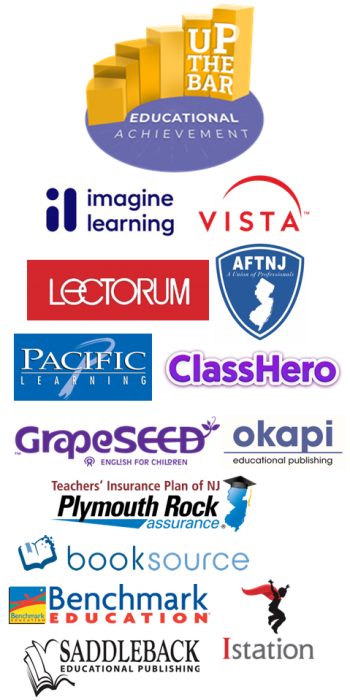 Thank You Diamond Sponsor
Thank You Diamond Sponsor
Thank You Platinum Sponsors
Thank You Silver Sponsors
Thanks for the Memories (cont.)
Please remember that when you are considering new material for your classroom, to reach out to the representatives of the publishers that attended our conference. We can say “thank you” to them by visiting their websites and/or calling them for advice. My classroom has been enhanced by their material, resources, and technology because I have a group of people I’ve met at the conference whose companies pride themselves on helping our students achieve their very best.
If you need anything – ESL, bilingual, high interest readers, etc. – reach out to the representatives who exhibited at our conference. You can click on the links below to peruse their materials. If you need anything from our exhibitors, we can provide a list of representatives and contact information. Feel free to email me, Tina Kern, at exhibitor-liaison@njtesol-njbe.org . I can connect you with someone who understands your needs, your budget, and your passion.
We hope you enjoyed the conference as much as we enjoyed providing you with an incredible experience with our ESL and Bilingual colleagues!
Tina Kern is the NJTESOL/NJBE Exhibitor Liaison.
Spring Conference Photo Gallery Your Photos from the Caption Contest
July 18, 2023
When Multilingual Learners Refuse to Speak Their Home Language
By Judie Haynes
 Haynes begins her TESOL blog post with the story of a Japanese boy who spoke only English and refused to speak his parent’s native language by age nine. He could not converse with his grandparents when they visited, and when his family returned to Japan, he struggled in school. This language loss often occurs gradually.
Haynes begins her TESOL blog post with the story of a Japanese boy who spoke only English and refused to speak his parent’s native language by age nine. He could not converse with his grandparents when they visited, and when his family returned to Japan, he struggled in school. This language loss often occurs gradually.
To mitigate the problem, the author recommends that schools, “…make an effort to celebrate bilingualism and promote the benefits of bilingualism.”
She lists strategies that teachers can share with parents about how to maintain the home/heritage language.
- Stress the importance and advantages of being bilingual.
- Play music, and watch television and movies in the parents’ language.
- Speak the language at specific times in the evening.
- Socialize with others in the community who speak the language.
- Celebrate holidays from the home country, and Facetime with family who live overseas.
- Watch sportscasts from the parents’ home country.
Haynes closes by stating that “As an educator, you can help your families to support their children in retaining their heritage language. Encourage the activities in the preceding list and take many opportunities to celebrate multilingualism!”
Judie Haynes was president of NJTESOL/NJBE 2010-2012. She taught elementary ESL for 28 years and is the author and coauthor of eight books for teachers of MLs. She writes monthly blogs for the TESOL International Association.
Silencing the Mother Tongue Makes It Harder for Bilingual Children to Learn English
By Allyssa McCabe
 In the article titled above, McCabe encourages parents to use their native language with their children. She begins with a summary:
In the article titled above, McCabe encourages parents to use their native language with their children. She begins with a summary:
“The best way for children to excel at English is to be good at their own native language. The message from academic research is that, at home, smart parents should stick with the language they know best. Speak that with your children – even if you can’t read it with them. English will take care of itself in time – and be better as a result.”
Her advice to parents is that if they avoid using their native language with their children, it will hinder their language development because the children will not have the benefits of “using enriched communication, full of vocabulary, syntactical and grammatical complexity as well as lengthy, complex stories.”
Parents need to be made aware that their native language is important and that speaking it with their children will enhance, not hinder, their children’s English language development. Ideally, they should read to their children in their own language, but if they cannot, they should speak to them in that language.
The author emphasizes that “We need to make sure that parents, desperate to give their children opportunities in a new and sometimes hostile country, do not inadvertently make life more difficult for them.”
July 25, 2023
FAQ: Raising Bilingual Children
From the Linguistic Society of America
by Antonella Sorace and Bob Ladd
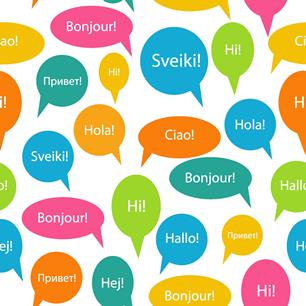 In this article, the authors write from their own experience raising bilingual children.
In this article, the authors write from their own experience raising bilingual children.
Sorace and Ladd address several questions about raising bilingual children. One is the belief that children get confused if there is more than one language around them. The authors assert that this does not happen although they may start speaking a little later than their monolingual peers. They may code switch, but they do not mix up the languages.
A second major problem is how to successfully raise bilingual children. In order to accomplish this, children must have adequate exposure to both languages and have a need to communicate in those languages. The authors acknowledge the main issue:
The hard part is making sure they have enough natural exposure to both languages. Most of the time, one of the two languages you want them to learn will be “more important” somehow, and the trick is to provide enough opportunities for them to use the “less important” one in a way that isn’t forced or artificial. The best way, if you can manage it, is to put children in situations where only the “less important” language is used so that there is no temptation to mix languages or revert to the “more important” language.
The more important language is the one used at school and in the neighborhood.
Sorace and Ladd also discuss possible family scenarios and the advantages and disadvantages of those, such as one parent speaking their native language and the other speaking English. Ideally both parents should be bilingual with the addition of a natural situation such as a day-care setting or interaction with monolingual grandparents.
They close by stating that even though school-age children may use English words when speaking their parent’s language, they will be able to communicate in that language as well.
Here are the details, a downloadable PDF, and a Spanish translation.
Prioritizing the Home Language
By Marina Haikin
 When my son was born, the idea of communicating to him primarily in our home language came to my husband and myself naturally because we speak only Russian in our house, and we wanted our son to be able to enjoy reading Russian classic literature and watching Russian cartoons and movies in their original forms. Thus, I truly wanted to help my son to become not only a well-developed, and well-rounded person with strong critical skills, but also to build healthy, supporting, and trustworthy relationships between us and our child. I truly believed that teaching the home language was the key to my end goals. As a mother and a teacher, I saw a lot of potential in Anton. But how do I teach the home language to my son in a foreign country so that it becomes a fun and a healthy activity for both of us?
When my son was born, the idea of communicating to him primarily in our home language came to my husband and myself naturally because we speak only Russian in our house, and we wanted our son to be able to enjoy reading Russian classic literature and watching Russian cartoons and movies in their original forms. Thus, I truly wanted to help my son to become not only a well-developed, and well-rounded person with strong critical skills, but also to build healthy, supporting, and trustworthy relationships between us and our child. I truly believed that teaching the home language was the key to my end goals. As a mother and a teacher, I saw a lot of potential in Anton. But how do I teach the home language to my son in a foreign country so that it becomes a fun and a healthy activity for both of us?
Finding the right books was a very important and joyful moment for me and Anton. I not only read Russian classic books for children to him, but also many European classic books. He would not go to sleep until we read him a book in Russian. We liked to discuss the books the next day. I was very meticulous in selecting Russian classic cartoons and movies which were mostly comedies, and we watched them together. That way we were able to share a laugh and remember those funny moments in the future.
We continued to speak only our native tongue at home, and we were surrounded by Russian speaking family members and friends. I was not concerned about Anton speaking very little English when he started attending an American kindergarten. I knew he would be able to master the language because he had been able to learn the home language well. My expectations were correct because when I attended the ESL school meeting for parents, I learned once again that children who speak the native language well, and whose vocabulary is rich, are able to master the English language fast. I had no doubt about that, and I was right.
Anton is ten years old now. He continues reading books and watching movies and cartoons in Russian. He has a very curious mind, and he can speak the home language very well. The fact that he can understand not only American humor, but also Russian traditional humor is priceless to us. We can still share a laugh in both languages. He sets a good example to his little brother in many ways. Anton has always been one of the best students in his American elementary school.
Marina Haikin is an adjunct professor in the Department of ESL & World Languages and a professional ESL tutor at Bergen Community College.
August 1, 2023
Black Lives Matter in Teaching English as a Second Language!
By Kristin Lems
 Lems focuses on how the legacy of injustice of white supremacy in the United States affects black English language learners, and what educators can do to mitigate the inequity they experience.
Lems focuses on how the legacy of injustice of white supremacy in the United States affects black English language learners, and what educators can do to mitigate the inequity they experience.
Black English language learners come from Africa, the Caribbean, and South and Central America. Some are educated while others may be refugees who have survived severe trauma. Since English is the official language of several African countries, these students may not be in ESL classes although they may speak an additional language at home. They may or may not be literate in this language. A lack of literacy in the home language may also be true for students from other African countries and Haiti where French is the official language.
A second problem is that while students from some countries may have experienced racism, many from Africa have not. A third issue is the low number of black teachers and the dominance of native English speakers in the ESL field. Finally, few black students participate in bilingual programs; for example, in Chicago, only 1% received the Seal of Biliteracy.
Lems offers several suggestions to mitigate these inequities in school. Teachers can:
- Try to find books in students’ home languages and invite someone to read the books to the class if bilingual education is not possible.
- Be aware that black immigrant children are not only adjusting to a new culture and language, but also dealing with racism and colorism: a preference for lighter skin. White teachers can invite guest speakers and build a library of “black-affirming books”.
- Encourage Afro-Latino students to become bilingual teachers.
- Encourage Black American students to study other languages and pursue a career as ESL teachers.
- Reach out to families of African descent to participate in dual language programs.
The author notes that “Nobody can do everything, but everyone can do something.”
Article recommended by the Countering AntiBlack Racism Committee of NJTESOL/NJBE
Here is the article with many more details.
Black Parents Raising Bilingual Kids Can Find Support With These 6 Tips
 By Nafeesah Allen
By Nafeesah Allen
Allen begins her article with the statement that “It can be challenging for non-native speakers to learn a new language. Black families raising Black bilingual kids might struggle to find community as well. But with these tips learning a new language is possible.”
The author lived in Mozambique when her children were born. There, being bilingual or trilingual was common. But when she moved back to the United States, it was very difficult to recreate that opportunity for her family. Bilingual nursery schools were too expensive and online resources for language learning did not depict black children.
Because of this, Allen started writing a bilingual children’s book series and gives these recommendations.
- Create Homemade Resources to Display in Your Home – Put notes and posters around the house so parents and children can practice the language together.
- Start Working on Multilingualism as Early as Possible – Ideally, expose newborn babies to different languages.
- Find a Community or Create Your Own – This may be a church or private teacher to have conversations in the target language.
- Keep an Eye Out for Language Bias Against First Gen Kids – For college applications, the author advises that students put both their heritage language and English as their first language.
- Know That if Concerns Arise, You Can Find Solutions – Growing up with two languages does not cause learning problems. If there is a problem, the child should be tested.
- Teach Your Children To Appreciate the Culture Without Pressure To Assimilate – While learning another language will help children appreciate other cultures, they don’t have to “fit in”. Communication is the goal.
You can find more information here.
August 8, 2023
A Website to Explore: games4esl.com
 Developed by experienced ESL teachers, games4esl has an incredible number of free resources for teachers of all levels of MLLs. The site features video and Powerpoint games, online quizzes, worksheets, printable flashcards and board games, PowerPoint lessons, lesson plans, exercises, and a blog of teaching tips.
Developed by experienced ESL teachers, games4esl has an incredible number of free resources for teachers of all levels of MLLs. The site features video and Powerpoint games, online quizzes, worksheets, printable flashcards and board games, PowerPoint lessons, lesson plans, exercises, and a blog of teaching tips.
The activities span a broad range of topics, including everyday life, famous people and places, sports, holidays and more. Quizzes cover vocabulary, grammar, and general knowledge. The site is also searchable for specific topics.
Here are three sample games:
- A memory video game can help students learn prepositions of place.
- The categories game can be played with general lists, or focus on topics students are studying.
- Another game is similar to Family Feud, which can be played with the video on the website or a downloadable template using 50 questions from the website. Questions could be generated by the teacher, online information, or a survey of students’ classmates.
The site is funded through advertisements, but they do not interfere with the online activities.
You can explore the site here.
iSLCOLLECTIVE
 iSLCollective.com, the ‘Internet Second Language Collective is “…a community of language teachers from around the globe who share our home-made worksheets on this free-to-use platform!”
iSLCollective.com, the ‘Internet Second Language Collective is “…a community of language teachers from around the globe who share our home-made worksheets on this free-to-use platform!”
This free website has worksheets, video lessons, and PowerPoints. Most of the activities are for learning English, but there are a few for French, Spanish, German, Portuguese, and Russian. The list of topics is broad: from news, science, grammar, to everyday activities.
There is every type of activity on the worksheets, and all levels of topics on the PowerPoints. The video lessons pause for matching, choice, fill-ins and more, and the interest levels for the videos cover all ages.
To search, first click on the type of activity, and then enter the topic. At the bottom of the page, the Next button will display more results.
Teachers need to register to download the PowerPoints, and there are some advertisements. They also ask for a small donation and encourage teachers to contribute documents and PowerPoints or create a video quiz.
Look here to find what is on the site.
August 15, 2023
Memes and GIFs for Writing Development
By Betsy Gilliland
 Gilliland summarizes two articles about enhancing writing with memes and GIFS and suggests additional options for their use.
Gilliland summarizes two articles about enhancing writing with memes and GIFS and suggests additional options for their use.
The first article describes how memes were used in discussions about culture between two groups of college students: international students from China and students taking Chinese language classes. Some students chose memes from those readily available online while others created their own. The use of memes enabled the students to “…express their own multicultural identities.” The author proposes that memes could provide a starting point for discussing cultures in the classroom.
The second article suggests using GIFS as a means for students to more confidently analyze and respond to academic texts. By choosing GIFS to represent their reactions, students become more engaged with the text. This could be modified for reactions to other media as well.
Gilliland provides other options for students: using memes or GIFS to represent supporting points for a topic, inventing a story about a meme or GIF, telling a story with the memes or GIFS, or using these to describe their cultures.
Here are the details and related articles.
The Secret Life of ESL Flashcards: How to Transform Them into Fun Classroom Games
By Susan Verner
Verner begins this blog with five simple ways to create vocabulary flashcards, and then she explains how to play five different games with them.
 Index cards could have words with definitions or pictures. They could be held together on binder rings for ready use.
Index cards could have words with definitions or pictures. They could be held together on binder rings for ready use.- Typing, printing on paper, and laminating the cards offers the options for small or large flashcards.
- Putting labels on playing cards provides a sturdy option for reuse.
- Sticky notes are an option for one-time use.
- Online flashcard creators could make the creation process easier.
Three of the games require students to demonstrate that they understand the vocabulary by giving a definition, a synonym, an antonym, using the word in a sentence, or filling in a blank for grammar.
- Carnival Cups – The flashcard is under one of three cups. If the student chooses the cup with the card, they also have to prove they know the vocabulary word to keep the card.
- Alaka-Zam! – Along with the flashcards, there are three with Alaka, and two with Zam. Students take turns picking up cards from a pile. They can keep a card if they can prove they know the word. The Alaka and Zam cards make the game more random and fun.
- Living Board Game – Students are the playing pieces with large flashcards on the floor providing the path for them to follow. The number of steps depend on the roll of a die and their knowledge of the word they land on.
- Phonetic “Slap” – The game starts with the cards upside down. If a student finds a match, the one who slaps the cards first and pronounces the sound on the card correctly keeps both cards.
- Playing by Ear – Each student has a card and listens to a song, a short video, or a story and holds up their card when they hear their word. This could also be used with grammar.
See the full instructions for the games here.
August 22, 2023
Emojis in the ESL and Bilingual Classroom
By Michelle Land

Recently, I was contacted by a woman in Alabama who had found our NJTESOL-NJBE.org website. Her daughter was looking for resources to tutor exchange students in the U.S. They found all of the resources located there to be of great help. Her daughter also found a fun resource that she used to engage the exchange students that she wanted to share with us. It was an article on using emojis in the English classroom.
Most language educators learn early on that communication is about 70-90% non-verbal. Therefore, using visuals is a very important aspect of language learning, especially for those who are visual learners. A picture of a dog is indisputably a dog, whether one uses the word “dog”, “perro”, or “собака”. This simplicity is easily adapted by emojis as representations of things, emotions, people, etc.
When I first completed my Master’s Degree in language education though, there was no such thing as emojis. Even though emoticons have been in use since the late 1800s, the first emojis were created in 1999 by the Japanese artist Shigetaka Kuritz. It was not until the early 2000’s that emojis were used around the world. Now, they have become a lingua franca for our data age. Most people have heard of emojis, and many of us use them daily in our communications. In fact, Oxford dictionary selected “emoji” as the word of the year in 2015!
That being said, there can be misunderstandings with emojis, especially intergenerational. I myself am guilty of sending emojis that I thought were completely innocent to my children. The responses I received clarified, in no uncertain terms, that they were considered by them to be completely inappropriate. Let’s just say that some fruits and vegetables are not what they appear to be!
Therefore, the article this young woman shared with us is one I would highly recommend. It has suggestions for different types of lessons and includes resources that can be useful while helping educators avoid any misunderstandings or pitfalls..
As president of NJTESOL/NJBE, I am so grateful that our website is helping people around the country as well as inspiring others to investigate, research, and share their experiences. Below is the link to the article on emojis in the classroom, as well as an article on the history of emojis. 🙂
Emojis in the English Classroom
Emoji: The Complete History | WIRED
Michelle Land is the President of NJTESOL/NJBE. She is an ESL teacher in Randolph.
NJTESOL/NJBE Website Resources
By Marilyn Pongracz

In the article above, our President, Michelle Land, mentioned the resources on our website: https://njtesol-njbe.org.
- You can click on the top Links & Resources for a full page of links to Immigration Resources such as the Guide for New Immigrants in twelve different languages, guides for teachers, activities for students, and professional organizations.
- Just below that, the Online Teaching Resources were compiled early in the pandemic in 2020 from suggestions sent by NJTESOL/NJBE members.
- Parent Resources link to the documents, presentations, and videos from the Parent Expos.
- From the Advocacy page, you can view position statements on various topics and in addition to policies presented to NJBOE. There are also links to government sites, resources for undocumented students, and other advocacy organizations.
- The final page in the Resources drop-down menu contains information about the Seal of Biliteracy.
Suggested updates are welcome. Sites must meet the needs of and be beneficial to our constituents, must be free to access, and must not exist for the purpose of selling products. You can email your recommendations to me, Marilyn Pongracz, at tech1@njtesol-njbe.org.
Marilyn Pongracz is the NJTESOL/NJBE Technology Coordinator and the ESL Tutoring Supervisor at Bergen Community College.
August 29, 2023
6 Basic Goals to Have in Teaching the English Language
By Revel Arroway
 Arroway opens with the statement that as teachers, “We’re not just preparing students for a class, we’re preparing them for life.” In order to give students the tools they need to keep up with the rapid changes in today’s world, teachers can inspire students to be life-long learners. The author expounds on six goals by giving the rationale and practical classroom lesson ideas for each one. These include ideas and topics for student participation.
Arroway opens with the statement that as teachers, “We’re not just preparing students for a class, we’re preparing them for life.” In order to give students the tools they need to keep up with the rapid changes in today’s world, teachers can inspire students to be life-long learners. The author expounds on six goals by giving the rationale and practical classroom lesson ideas for each one. These include ideas and topics for student participation.
- Be a Student Informant – Whatever is taught should be coupled with the need to know and the context of, for example, a lesson on grammar or vocabulary. With the latter, students could also be informants by sharing how the same ideas are expressed in their native languages.
- Put on the Coach Hat – Encourage students to excel. Arroway suggests surveys to help students discover their strengths and use these to cooperate and help each other as teammates.
- Be a Cultural Ambassador – Share your own experience with language learning and why you speak the way you do. In addition, let your students know why you have chosen teaching as a profession.
- Animate Students to Become Agents of Change – People who speak English, now a global language, can participate in the changes that are happening in the world. Besides this, the author demonstrates how language learning is an aspect of change, for instance, by comparing similar expressions in Spanish and English.
- Inspire Learning in Your Students – Students need a “Mission Statement” for both short and long term learning goals, to develop a “learning attitude”. They also need to know how to use the tools they have to continue learning and the benefits of doing so. Two of the suggested questions are “What do you plan to do with your English knowledge?” and “What will you have to do every day to make English useful to your long-term plan?”
- Choose Your “Niche” and Stick with It – Every teacher has their own strengths and expertise, and that can be the basis for their approach to language teaching.
Arroway closes with the hope that his suggestions help you as a teacher to become “… the inspiration, the agent of change, the vocational catalyst for yourself, your students and your corner of the world.”
See the article for a lot of practical ideas for you and your students.
Your Guide to Fluency vs. Accuracy in English Language Teaching
By Linda D’Argenio
 D’Argenio begins her blog by defining accuracy and fluency. Accuracy refers to being able to use grammar and vocabulary correctly in speaking and writing. Fluency is being able to write or speak easily and understandably.
D’Argenio begins her blog by defining accuracy and fluency. Accuracy refers to being able to use grammar and vocabulary correctly in speaking and writing. Fluency is being able to write or speak easily and understandably.
She mentions an experiment with two groups of children learning English as a foreign language. One group was taught with a communication approach and the other with more grammatical lessons. In the end, the first group was a little more accurate and fluent than the second group.
In order to teach both, the author recommends Teaching Proficiency through Reading and Storytelling (TPRS) in which students use targeted vocabulary to develop a story as a class for speaking and reading. See What Is TPRS? for a description of this method. She also suggests that “When focusing on accuracy, it is a good idea to do so within the context of conversation or reading. Students who are involved in ‘interesting’ content will be more focused and receptive to explicit grammar instruction.” She also mentions using role play or presentations.
The author concludes that both accuracy and fluency are essential, and they can be taught with the same activities.
You can find more information here.
September 5, 2023
Welcoming Newly Arrived High School ELLs
By Sarah Elia
 The author provides a list of options for helping high school ELLs “thrive socially, emotionally, and academically.” Here are the three categories.
The author provides a list of options for helping high school ELLs “thrive socially, emotionally, and academically.” Here are the three categories.
- Create an Inclusive Physical Environment to make newcomers feel safe and welcome. These might be decorating bulletin boards with flags of students’ home countries, welcome signs, or students’ photos with information about their home countries. Positive phrases in students’ languages and English may be included in morning announcements, emails, or posted in various places in the school.
- Increase Multicultural Awareness for the purpose of demonstrating to ELLs “… that their background knowledge is an asset to their community.” Help them meet others in the school, such as students, teachers, and staff who speak their home language. Set up opportunities for them to share their language and culture with interested students. Find documentaries about students’ home countries or give them the opportunity to share information about their home countries with other students.
- Provide Supplemental Supports – This includes staff who can communicate with the students in their languages, and if possible, offer extra help with English after school.
The author concludes that
The above recommendations are steps in supporting ELLs, while also promoting understanding, tolerance, and acceptance. Bilingualism, a tool in understanding multiculturalism, is common in much of the world and, with the help of our ELLs, perhaps will be increasingly valued in school communities across the United States.
5 Playful Strategies That Reduce Language Learning Anxiety
By Paige Tutt
 The author notes that middle and high school students in language classes are often afraid of speaking, and this can hold back their language development. To counter this, Tutt recommends five pair or small group activities that she observed in an English language class in Denmark.
The author notes that middle and high school students in language classes are often afraid of speaking, and this can hold back their language development. To counter this, Tutt recommends five pair or small group activities that she observed in an English language class in Denmark.
- Draw It Out is a Pictionary type game in which one student draws a picture of a vocabulary word from that day’s lesson, and another student tries to guess what the word is. Students alternate drawing and guessing as they work through the list of words and phrases from that day’s lesson.
- Inner Circle, Outer Circle – Students find partners and then one of them is in the inner circle and the other in the outer circle. Students discuss a question about that day’s lesson for a specific number of minutes, and then one circle rotates so they talk to a different partner about the topic.
- Walk and Talk – students are given a set of questions to discuss, but instead of sitting while talking, they walk around in a larger space such as a courtyard or outdoors if possible.
- Fortune Teller – This is the folded paper from which students first choose a color to open a flap and then a number under which is a question for them to talk about. (See the photo above.)
- Role-Play as Influencers – Small groups of students create fake videos for TikTok. Students write the text, prepare props, give instructions to the “influencer” and record the video with a phone. When they are finished, the video is forwarded to the teacher.
These activities can help students to feel more comfortable taking chances as they speak in English, which in turn, helps them advance in their language learning.
You can find the details here.
September 12, 2023
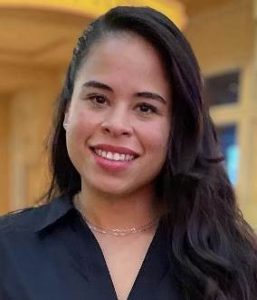 Our Very First Member of the Month –
Our Very First Member of the Month –
Yacqueline Cruz
Congratulations to our very first Member of the Month – Yacqueline (Jackie) Cruz from Randolph Township Schools and a former Morris/Sussex NJTESOL/NJBE Chapter Secretary.
Jackie has been an invaluable resource to the Randolph district to help support students, families, as well as her colleagues. In addition, Jackie radiates kindness and warmth. Students always feel safe and engaged with her as she focuses on the assets they bring to our schools. In this way, she is creating confident students who are able to build upon their strengths to become successful students.
Do you want to nominate someone to be member of the month? Please use this this link to fill out the nomination form.
Why I Keep Teaching
 As another school year begins, I wanted to share an article a dear friend and colleague of mine sent to me. During a time when we can get caught up in all the chaos of a new school year and the stressors it can create, it is also nice to take a moment to reflect. To reflect upon the positives, the true benefits of our profession that no other profession can claim. Below are the five important reasons why the author decided to stay in teaching. What are your reasons? Wishing you a wonderful 2023-2024 school year! – Luigina Finneran
As another school year begins, I wanted to share an article a dear friend and colleague of mine sent to me. During a time when we can get caught up in all the chaos of a new school year and the stressors it can create, it is also nice to take a moment to reflect. To reflect upon the positives, the true benefits of our profession that no other profession can claim. Below are the five important reasons why the author decided to stay in teaching. What are your reasons? Wishing you a wonderful 2023-2024 school year! – Luigina Finneran
- Every time I show up for work, I might change a life for the better.
- Every time I show up for work, a student might change my life for the better.
- My work has invisible ripple effects.
- My head and my heart are engaged every day.
- My work is an investment in a brighter future.
Rachel Jorgensen
You can read this inspiring article here.
Luigina Finneran is the NJTESOL/NJBE Bilingual/ESL Middle School 6-8 SIG Representative. She teaches in Fair Lawn Schools.
September 19, 2023
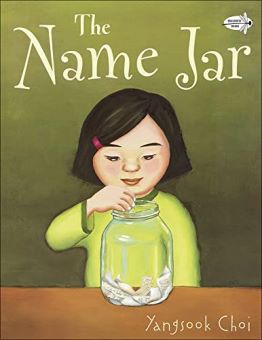 The Name Jar
The Name Jar
The following story is a read-aloud I use in my classes the first month of school. As someone who has a very “Italian” name, I always cringed when someone would have to pronounce it. This is a great story that many students can relate to and a great welcoming tool in the class. In addition to studying the elements of a story with it, I also have the students reflect on their own names and their meaning. It opens up wonderful conversations about how names are given in every country and culture and to be proud of them. – Luigina Finneran
Summary Overview from Barnes and Noble
A heartwarming story about the new girl in school, and how she learns to appreciate her Korean name.
Being the new kid in school is hard enough, but what happens when nobody can pronounce your name? Having just moved from Korea, Unhei is anxious about fitting in. So instead of introducing herself on the first day of school, she decides to choose an American name from a glass jar. But while Unhei thinks of being a Suzy, Laura, or Amanda, nothing feels right. With the help of a new friend, Unhei will learn that the best name is her own.
From acclaimed creator Yangsook Choi comes the bestselling classic about finding the courage to be yourself and being proud of your background.
Luigina Finneran is the NJTESOL/NJBE Bilingual/ESL Middle School 6-8 SIG Representative. She teaches in Fair Lawn Schools.
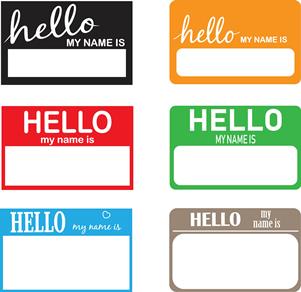 What’s In a Name?
What’s In a Name?
The Story Behind NameCoach
By Praveen Shanbhag
Shanbhag founded a software company as a solution to the mispronunciation of names. His own experience of having his name repeatedly mispronounced made him feel like an outsider. He quotes Dale Carnegie, who wrote that “a person’s name is to that person the sweetest, most important sound in any language.” Shanbhag references studies and anecdotes to emphasize that mispronouncing students’ names is a type of “cultural’ othering’” which can negate efforts to create a welcoming multicultural environment. It can even cause students to avoid participating in class.
After hearing his sister’s name mangled at her graduation even though the reader was genuinely trying to get it right, he decided to create an app in which students could record their names so teachers and others could say their names correctly. The app is free through the ColorinColorado website.
You can read more about it and sign up here.
Announcements
Do you want in-person professional development? Come join the Bergen County Chapter on September 28, 2023 at Memorial Middle School Media Center located at 12-00 1st Street in Fair Lawn, New Jersey from 4:30-5:30 PM. Parking is available in the back parking lot. Margaret Churchill and Hana Prashker will be presenting information on implementing the 2020 WIDA Standards. Invite your content area colleagues and administrators as well. Everyone is welcome.
You’re invited to the Passaic County Chapter Meetings. This fall season we have some amazing Professional Development lined up for you. Make sure to check out our website to register for them! All meetings will be held virtually until further notice. Meetings are from 4:30pm – 5:30pm PD Certificates Available
- Sept. 21 “Implementing the 2020 WIDA Standards”
- Oct. 19 “WIDA ACCESS Accommodations”
- Nov. 16 “Bilingual Education Best Practices”
- Dec. 14 “AI Tools for Educators”
You can view past topics on our YouTube channel. Follow us on Instagram!
 2024 Spring Conference You can attend in person at the Hyatt, New Brunswick May 29, 30, & 31 OR watch the Video Library Workshops June 3 – Sept. 2. Share what works for you by submitting a Call for Workshop Proposal. Beat the deadline by Registering Early!
2024 Spring Conference You can attend in person at the Hyatt, New Brunswick May 29, 30, & 31 OR watch the Video Library Workshops June 3 – Sept. 2. Share what works for you by submitting a Call for Workshop Proposal. Beat the deadline by Registering Early!

